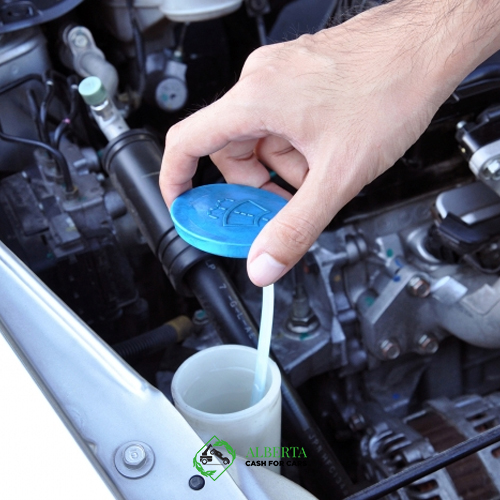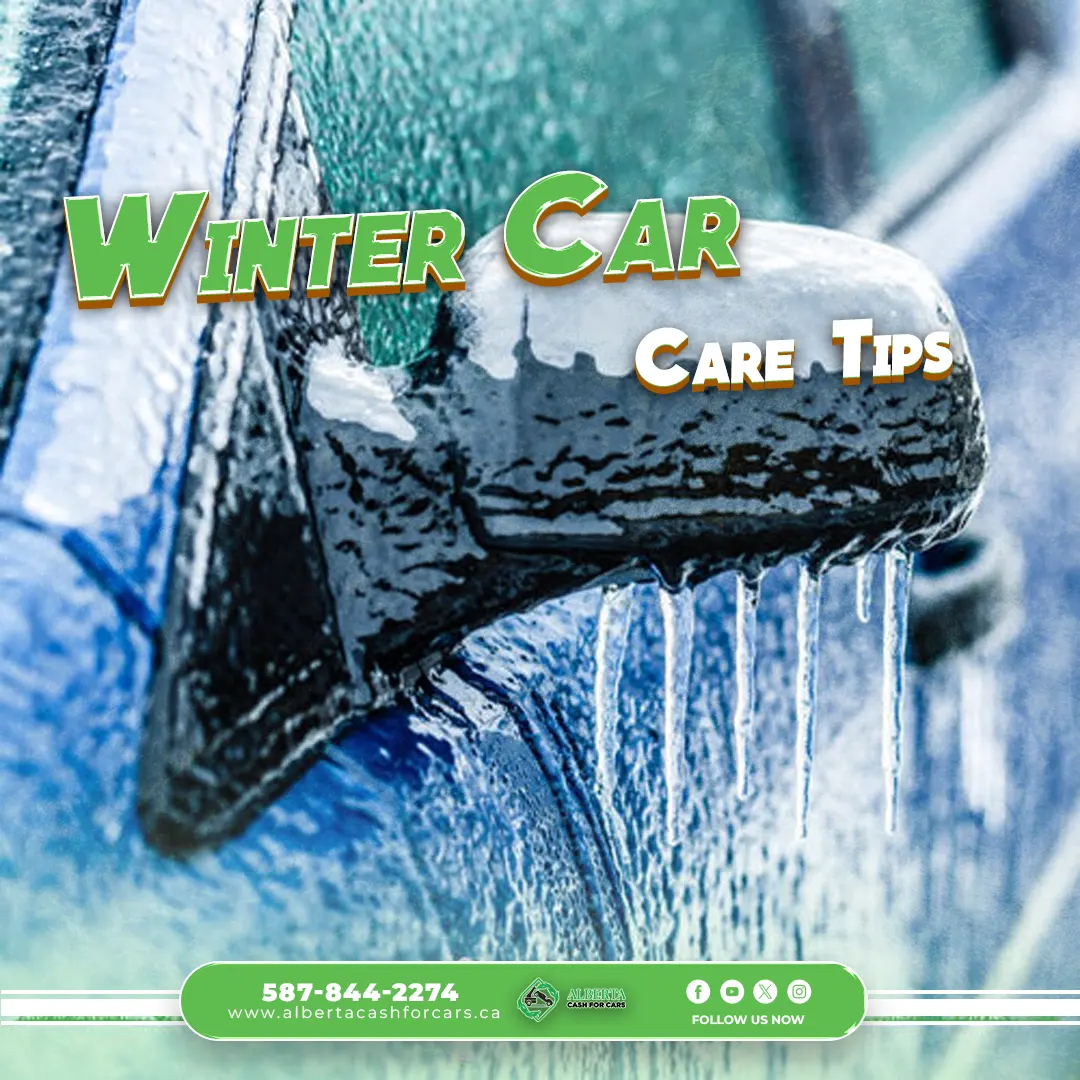Your car may experience a variety of effects from severe weather. It doesn’t matter if it’s the summer, the winter, or the rainy season. To function properly under challenging situations, your car needs to be properly maintained. This page provides comprehensive winter car maintenance advice. Cash for used cars Calgary made an effort to provide some advice on how to keep your vehicle in good condition over the winter.
No Hassle, Just Cash — Book Your Free Pickup or Quote Today!
Important winter car care tips
The winter season can be much harder in some countries than in other places, so it is absolutely necessary to follow a set of winter car care tips to prepare your car for winter. This can extend the life of your car. Also, winter car care tips can reduce the cost of maintenance or repairs. In the following, we will state these essential points:
Related Post:
A Dynamic Car Service Checklist| Revitalize and Roll
Preliminary check-up
This tip is one of the easiest winter car care tips. We recommend taking your vehicle to an authorized service center for a health check before changing seasons. This work is not only for winter, but it can be very useful for winter. Cars are more prone to break down in extreme weather conditions. As a result, doing a preliminary check to ensure the main parts’ normal operation can prevent possible accidents.
Use of winter tires
You can use all-season tires in winter, but remember that these tires will not provide you with the maximum performance you may need in your environment. If you are in a place with very cold winter temperatures, we recommend that you use winter tires during the winter. When the temperature is consistently near or below zero, non-winter tires harden and make it difficult to drive on the road. Still, winter tires are made of special compounds that can withstand cold temperatures and have better traction. They have ice and snow. You can use all-season tires if you live in a place with normal winters.

Checking the oil and fuel level of the car
One of the important winter car care tips is to check that the car’s oil level is between the minimum and maximum values. When the car oil is less than required, it can lead to failure or damage to the engine. You should check the oil level after the car warms because a cold car looks low on oil. Be aware that too much oil can also cause a lot of damage.
Another thing to check is that the car tank should have a lot of fuel. If the fuel light is on, don’t try to go a long way with it. It may seem like your car is nice and warm, but it’s better to go to the gas station instead of having a problem in the middle of the road.

Car battery
Car battery performance in cold weather is more difficult than at other times. You should perform a battery voltage test to ensure it is strong enough to survive the cold winter months. You can definitely avoid getting stuck in the cold and not starting the car.
Checking car lights
In winter, the sunset conditions are such that the sun sets early, which means there is less daylight. As a result, it should be ensured that the car’s lights work optimally. If the car lights are not functioning properly, you should check and replace them.
Checking the windshield wiper fluid level
Windshield wipers and wiper fluid lead to good visibility in stormy and snowy conditions. The car can consume wiper fluid more quickly during storms and snow. Wiper blades only last one year. If you think it is time to replace them, then acting is better. Considering how hard winter is, you can equip your car with specialized winter wipers. You should also ensure the car has low freezing point wiper fluid.
Checking car antifreeze
If the car’s cooling system does not have the right amount of antifreeze, it can cause major damage at temperatures below zero degrees. You can get an antifreeze tester from your local garage and check your car’s manual to see the proper conditions and type of antifreeze you should use. Also, if you don’t want to do it yourself, local garages can do it. Check other cooling system parts, including the radiator, cooling hoses, and water pump.

Car wash in winter
You definitely know that there is a lot of snow, mud, ice, salt, and sand on the roads in the early winter months. So, one of the important winter car care tips you may not have thought of is washing your car often. This is an important part of winter car care. Having a good plan for washing and waxing the car is better. This prevents rusting, but along with that, you must constantly take care of it. Consider car tires when washing; this will help keep your car in excellent condition.

Cleaning car windows
Being unable to see out of the car easily means that danger is near you. It is better to use an ice scraper in the mornings when the car windows are frozen before using the wipers and wiper blades. If the space where you park the car is not covered, it is better to put the wipers in the raised position to prevent the glass from freezing during the snow. Because there is a lot of dirt, mud, and salt on the road in the winter season, you likely use your windshield washer constantly, so be aware that you fill your windshield washer tank with a winter washer solution that contains antifreeze. In this situation, make sure of the proper operation of the heater. To help prevent windshield fogging, turn on the air conditioning to humidify the air.
Being prepared for emergencies
Canadian weather is variable and can create different conditions for drivers, so those who drive regularly should equip their car with a winter emergency kit. Having blankets, flashlights, cell phone chargers, clothing, and a first aid kit can keep you safe and warm in an emergency. Many people don’t pay much attention to these winter car care tips, but doing this simple thing can ensure that you and other car occupants are safe in the winter.
Community Support and Information
Leverage local resources for valuable winter driving tips Alberta. Connect with community forums to share experiences and gain insights into specific challenges faced by drivers in your area.
Government Initiatives and Assistance
Explore government programs offering winter driving tips Alberta assistance. Access official guidance and support during challenging conditions, ensuring you have the necessary information and resources to tackle the winter roads.
The Psychology of Winter Driving
Winter driving can induce stress and anxiety. Adopt these strategies for better psychological preparedness:
- Stay Calm: Practice deep breathing and stay calm in challenging situations. Panic can hinder your ability to make sound decisions.
Remind yourself that winter conditions are temporary, and your journey will eventually come to an end. Focus on the immediate steps you can take.
- Know Your Route: Familiarize yourself with your route to reduce uncertainties. Knowing the roads reduces stress and allows you to anticipate potential challenges.
Use navigation apps to plan your route in advance. Check for real-time traffic updates and road closures.
The Impact of Wildlife
Winter conditions can pose challenges for wildlife as well. Animals might be more active on the roads. Follow these strategies:
- Be Vigilant: Keep an eye out for wildlife, especially during dawn and dusk. Animals, such as deer, are more active during these times.
Reduce your speed in areas known for wildlife crossings. Be especially cautious near wooded areas and open fields.
- Reduce Speed: Slow down in areas known for wildlife crossings. Reduced speed gives you more time to react if an animal suddenly appears on the road.
If you see one animal, be prepared for others. They often travel in groups, and more may follow.
Preparing Your Vehicle’s Exterior
Here are some winter car care tips for your car’s exterior as an item in winter car care list:
- Applying a winter wax or sealant helps protect the paint from moisture and road grime. Choose a product formulated for cold weather and spread a thin even coat per the directions.
- Road salt used for de-icing can corrode and rust unprotected metal. Undercoating the undercarriage and wheel wells creates a barrier against salt damage. Frequent washing also removes accumulated salt and grime.
- Make sure all exterior lights are functioning properly before winter sets in. Replace any burnt out bulbs and keep extra spares handy. Properly aimed headlights are critical for visibility.
- Cold weather can cause rubber seals around doors, windows and mirrors to become brittle and cracked. Keep them supple by wiping down with silicone or rubber protectant. Gently replace any severely damaged sections.
Safe Winter Driving Practices
These are some crucial practices to safe driving in winter that needs to be mentioned:
- Leave ample following distance and avoid sudden acceleration or braking on slick surfaces. Signal turns well in advance so other drivers can react. Turn slowly to avoid losing control.
- On snow, get a feel for traction by starting gently from a stop. Brake early and progressively, allowing wheels to cut through snow instead of skidding across the surface. Time stops to avoid intersections where you could slide.
- Anti-lock brakes rapidly pulse brake pressure to enable steering control during hard braking. Press the pedal down fully and do not pump the brakes. The pedal will shudder as the ABS system activates.
- In extreme cold, depress the accelerator halfway while cranking for 5-10 seconds to prevent stalling. Idle the engine briefly before driving to allow oil circulation. Warm the interior slowly once moving.
Alternative Transportation Options
During severe winter conditions, consider using public transportation. It not only reduces the number of vehicles on the road but also enhances safety by putting the responsibility of navigating through the elements in the hands of professionals.
Collaborative travel through carpooling and ridesharing not only reduces traffic but also contributes to safer road conditions. Sharing rides improves efficiency, particularly during challenging conditions when a collective approach is beneficial.







